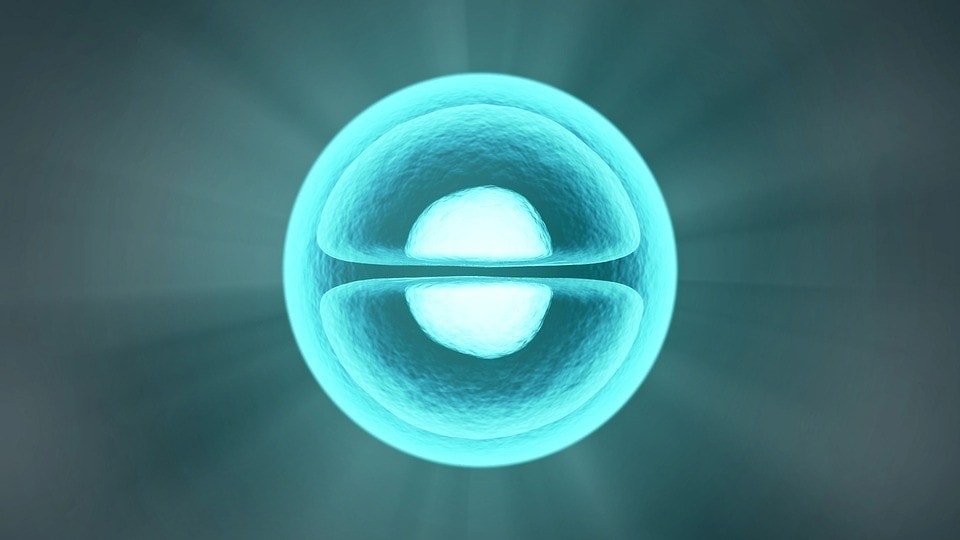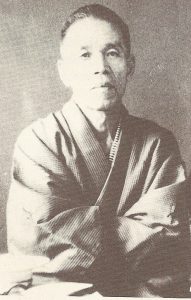Mitochondria – the cells’ power stations – are small cell organelles that are responsible, among other things, for the production of ATP (adenosine triphosphate). ATP is the energy carrier that all our cells need to function properly. This energy, called adenosine triphosphate or ATP, is used to support every function in our body.
Mitochondria are the places where oxygen is processed. Mitochondria are cells in the cell that change oxygen. Mitochondria are important sources of energy for our body. They are tiny factories in our cells that convert the food we eat and the oxygen we breathe into energy.
You have not just one mitochondrion per cell, but thousands, each of which is individually dependent on the cell’s energy requirements. Like the body, which is in constant breakdown and construction (catabolic and anabolic), mitochondria are also in a continuous process in which they reproduce, use up, grow or break down.
The greater the energy requirement of a cell, the more mitochondria are formed and vice versa.
Each cell contains hundreds or thousands of mitochondria; They are found in larger concentrations in active organs and tissues such as the heart, brain and muscles.
In fact, we have more than 100,000 trillion mitochondria in our bodies, and each one contains 17,000 small assembly lines that make ATP. Mitochondria are where metabolism takes place.
Structure of the mitochondria
Mitochondria are about 1 µm (micrometers) long. The shape of mitochondria is variable, the cells move in the cytoplasm and can assume different shapes. Just like the chloroplasts and the cell nucleus, mitochondria are surrounded by two cell membranes. The two cell membranes create a matrix space inside the mitochondrion and an intermembrane space. The outer mitochondrial membrane is responsible for the exchange of substances and the protection of the organelle. It contains so-called porins, special transmembrane proteins through which substances can be absorbed and released. The inner mitochondrial membrane lies in folds, which leads to a strong increase in surface area. This is where the proteins of the respiratory chain are located.
The genetic information lies in the matrix space. Mitochondria have their own DNA, the mtDNA. They act as an autonomous organelle and divide independently of the cell’s cell cycle. Mitochondrial DNA is circular and, from an evolutionary point of view, probably derives from the immigration of a bacterium into a predecessor of the eukaryotic cell.
Function of the mitochondria
The main task of the mitochondria is the production of energy in the form of ATP (adenosine triphosphate); this happens through the respiratory chain. The respiratory chain consists of a number of enzymes which are located in the inner mitochondrial membrane. These enzymes lie next to each other and form a chain through which electrons are transported. As a side effect, this creates a concentration gradient of protons, which is used by the ATP synthetase to produce ATP.
In addition to the energy production, the mitochondria, through their subdivision into different compartments, provide space for the course of chemical build-up and breakdown processes, which must take place spatially separated from one another. The mitochondrial matrix contains enzymes that are important for the citric acid cycle and the breakdown of fatty acids. In addition, the mitochondria serve as calcium stores. They can store calcium ions for a period of time. If calcium is required, the mitochondria release the calcium ions they have absorbed and thus contribute to maintaining the cell (homeostasis).
Mitochondria arise from themselves through a bacteria-like division into two parts. Food that is absorbed into the body is first digested and then absorbed into the blood. There it is in turn distributed to the cells, where it is converted into storage energy through cell respiration or oxidation.
Since the chemical functions of the respiratory chain take place in the mitochondria, the released energy is converted there, stored in a molecule called adenosine triphosphate (ATP) and can be used at any time. Once the mitochondria are used up, they are broken down by the endoplasmic reticulum, the Golgi apparatus and the lysosomes.
The fine structure and the precise functions of mitochondria have only been known for around 60 years. At that time, mitochondria were examined and made visible with the help of an electron microscope (see picture on the right) for the first time.
Mitochondria are found exclusively in the cells of eukaryotes; however, they are completely absent in prokaryotic cells. Mitochondria are those cell organelles that function as power plants (“power plants of the cells”) and are therefore responsible for energy production. These particular organelles are found in most eukaryotic cells. Depending on the cell type, there can be a single, very large mitochondrion or up to 2000 small mitochondria. In humans, for example, the red blood cells do not contain any mitochondria, whereas the metabolically active liver cells can contain up to 2000 mitochondria per cell.
It has long been assumed that mitochondria are single, lenticular organelles. It is now known that they form a dynamic network of branched tubes that constantly rebuild itself. Cells that have a high energy requirement (e.g. hepatocytes) have a very large mitochondrial network.
Mitochondria have a double membrane. The outer membrane (often abbreviated to OMM for outer mitchondrial membrane ) delimits the mitochondrion from the outside and contains channels for the permeability of molecules. The inner membrane (often abbreviated to IMM for inner mitochondrial membrane ) forms large folds that fill the interior of the mitochondrion like a cistern. The membrane of the cristae contains the enzyme complexes of the respiratory chain and ATP synthase, a transmembrane protein whose function is the production of ATP.
The mitochondrial matrix is found in the inner membrane space. In the matrix one finds the circular DNA of the mitochondrion and ribosomes.
Two different basic types of mitochondria are known.
- Sacculus type (with cristae)
- Tubular type (predominant in steroid-producing cells)
Respiratory chain of the mitochondria
The chemical reactions of the respiratory chain take place in the mitochondria. This makes it possible to use ingested glucose with a high degree of efficiency for the synthesis of ATP. ATP is synthesized in the intermembrane space (between the two membranes of the double membrane) and can be released from there into the cytosol of the cell.
The mitochondria are also involved in the reactions of the citric acid cycle and beta oxidation. They have enzymes for the synthesis of certain membrane lipids (including cholesterol) and are the place for the synthesis of iron-sulfur clusters. Mitochondria represent an intracellular store for calcium and thus also serve the homeostasis of the cell. Other functions of the mitochondria are the regulation of programmed cell death (apoptosis) and the production of ROS (“reactive oxygen species”), which are used for signal transduction.
Multiplication of the mitochondria
Mitochondria divide in a similar way to bacteria. A transverse division takes place, whereby the mitochondrial DNA is distributed evenly among the daughter mitochondria. The process of forming new mitochondria is known as mitochondrial biogenesis.
The human body needs energy to survive. This is obtained from food and then enters the cells via the blood. In order to be used or stored there, however, it must first be “burned” – similar to gasoline in an engine. This is the task of the mitochondria, which are therefore also referred to as the body’s power plants.
Mitochondrial disease
The term mitochondrial disease is a collective term for various neuromuscular syndromes that are based on a functional disorder of the mitochondrial respiratory chain. Mitochondriopathy is a disease of certain structures in the body’s cells, the mitochondria. These tiny “cell organelles” are also known as the “power plants of the cell”. They are found in almost all human cells. Metabolic processes such as the so-called respiratory chain take place in them. Through this process, the body gains around 90 percent of the body’s energy from, for example, sugar (glucose) or fatty acids. In mitochondrial disease, the proteins that are involved in the respiratory chain are not functional. Therefore, relatively little energy is obtained. The reason for this is a change in the genetic make-up (mutation). This particularly affects organs that require a lot of energy. These include the brain or the eye muscles.
When your mitochondria are not working properly, your metabolism is less efficient and can actually come to a standstill. Problems arise because these powerful power generators are VERY delicate and easily damaged. When damaged, we suffer from low energy levels, fatigue, memory loss, pain, rapid aging, and more.
Fatigue is the most common symptom of poorly functioning mitochondria. This is why we tend to feel tired as we age. Old people had more time to poison themselves than younger people.
Mitochondria are really important, and many things can damage them, mainly from uncontrolled oxidative stress. This may sound complicated, but the reality is that we are all familiar with “oxidative stress”, even if some of us do not know what the term means.
Oxidation is the rust on our cars, the brown color that appears on an apple when it’s cut and exposed to the air, the rancid vegetable oil in our closets, even the wrinkles that form on our skin. What most of us fail to realize is that our own tissues rust, our own fats go rancid, and our brains melt as we go through our daily lives.
What triggers this process are “poisons” such as too many calories, smoking, sunburn, toxins, anti-nutrients such as sugar and many others. The “poisons” lead to injuries by upset of balance and a chain reaction of damage to cells and tissues triggers that show us the way to weight gain and chronic illness.
Why should we strengthen our mitochondria?
The ATP is formed by the mitochondria from the well-known macronutrients “carbohydrates” and “fats”, whereby the burning of glucose (carbohydrates) is considered energetically “easier” for mitochondria. However, “glucose oxidation”, i.e. the burning of glucose, produces more free radicals than fat burning.
Therefore, the aging process of the mitochondria is accelerated by this type of energy production. Obsolete mitochondria gradually lose the ability to burn fatty acids effectively and are therefore increasingly dependent on glucose for energy production.
This can lead to a vicious circle, as the self-destruction process is driven faster and faster by the free radicals produced by glucose. The resulting consequences are, among other things, strong dependence on sugar and carbohydrates as well as increasing fat deposits. With increasing age, the body’s ability to produce energy effectively is impaired.
Symptoms and later also disease (s) such as diabetes mellitus, cancer, cardiovascular diseases and obesity are diseases in which mitochondrial damage is essential.
How do we reproduce mitochondria?
If the energy requirement increases or the energy supply in the cells decreases, a special protein becomes active that protects the cell and increases energy production (the mitochondria can also “order” to reproduce).
In other words: a cell reacts flexibly to external environmental influences, such as food shortages, because a certain minimum ATP production must always be guaranteed in order to ensure the survival of the organism.
The name of this particular protein is AMPk. It serves as a sensor for the current energy status of the cell. Together with Sirt1, AMPk activates the so-called PGC1-alpha. A protein that is responsible for the reproduction of the mitochondria and activates genes that are responsible for lipid metabolism.
Basic requirement for healthy mitochondria and ATP formation
For the production of ATP – i.e. energy – enzymes, calcium, magnesium and phosphorus are important.
The enzymes contain iron and can only be formed if there is a sufficiently large amount of it in the body. If in doubt, you can have your iron levels checked by the doctor.
Calcium and phosphorus are usually sufficiently absorbed through the diet. However, if the vitamin D value is too low, the absorption of calcium and phosphorus in the intestine may be impaired. This can lead to a possible undersupply.
Magnesium is another important component in the energy metabolism. For this reason, always take enough magnesium. Magnesium citrate, or better still a combination of magnesium citrate and bisglycinate, is a magnesium compound that can be easily absorbed by the body and purchased very cheaply.
Exposure to cold
The thought of setting the right stimuli through exposure to the cold and training the body at the cellular level is one of the possibilities.
The many hormonal and health benefits are very compelling. It has also been found that the cold can induce PGC-1, which stimulates mitochondrial biogenesis and respiration in the muscle cells in several ways.
In addition, with regular exposure to cold, chemical, or cold, thermogenesis plays a greater role. This is the oxidation of fat in brown adipose tissue. This fatty tissue is particularly pronounced in babies and continues to decline in adulthood.
The highlight: In contrast to the white fatty tissue (stomach, bottom, etc.), this fatty tissue has a large number of mitochondria that oxidize the fat directly and thereby generate heat. Despite regression, many studies have found that this brown adipose tissue can be reactivated and thus plays a major role in generating heat in the body.
Altitude training
Altitude training is a form of training that is largely known, especially among sports teams and competitive athletes, which is characterized by a “low-oxygen training environment”. The low oxygen saturation ensures that, among other things, changes take place in the cardiovascular system, respiratory system and blood system.
In mountainous regions, for example, native Tibetans have ten times as much nitrogen monoxide (NO) in their blood as people who live just above sea level. This high concentration of nitrogen monoxide leads to a doubling of the blood flow compared to German conditions and to an optimized supply of oxygen.
In fact, we also find interesting adjustment mechanisms for these small energy donors during high-altitude training: after just minutes and a few hours, they show changes that are far before those of the new blood formation.
They adapt to environmental influences in order to keep the body in a physiologically advantageous range. Among other things, it was found that altitude training increases the mitochondrial ability of fatty acid oxidation, i.e. fat burning.
If an optimal load range is maintained in altitude training – including hypoxia training – the mitochondria adapt process in such a way that an increase in performance occurs.
However, if the extent and the intensity of this stress is in a non-physiological range, the expected effects will not be achieved. In order to avoid this difficulty and still be able to train at higher intensities, a very special training program has been devised to optimize the “cell power plants”, which is called “Intermittent Hypoxytraining”.
The advantage of this method is that a strong training stimulus is set, which triggers a cascade of the mentioned advantageous adaptation measures.
Endurance training
Endurance training promotes the formation of new mitochondria in the muscle fibers. If we remember the mechanisms by which new mitochondria form, the following conclusion is only logical: If the cell’s energy requirements increase, more mitochondria have to be formed in order to increase the “oxidative capacity” and to be able to provide enough energy.
Summary:
- Mitochondria are the power plants of our cells.
- They produce ATP from fat and carbohydrates.
- The mitochondria should be cared for because a restriction leads to a drop in performance and various diseases.
- Mitochondria multiply in order to always be able to provide enough energy.
- Basic requirements for healthy mitochondria must be given. (Enzymes, calcium, magnesium, phosphorus)
- There are many ways to optimize the mitochondria. (Cold exposure, altitude training, endurance training, ketogenic diet, calorie restriction, intermittent fasting, supplements)
- Optimizing the mitochondria is also optimizing the immune system







